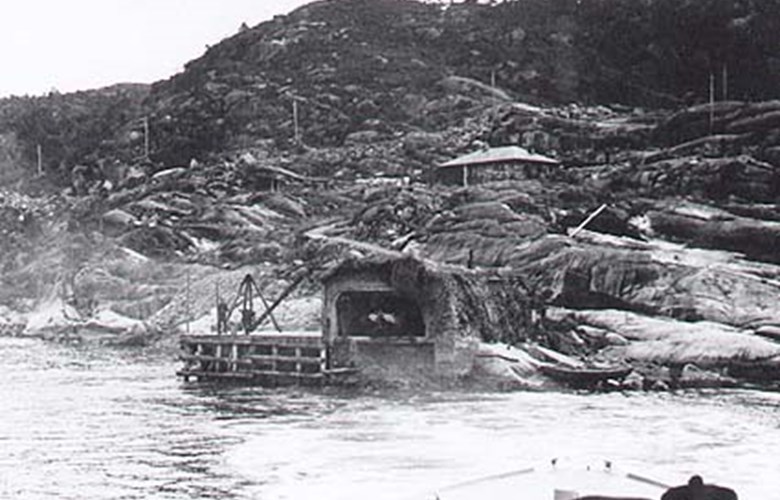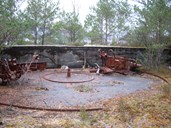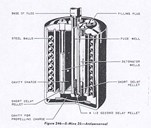Heavy defence along the Sognefjord
In 1940, it was important for the German navy to establish a defence of the entrance to the Sognefjord as quickly as possible. For this reason, the navy started building a torpedo battery at Rutledal, and a coastal fort at Nesje. The Germans concentrated their main defence facilities at Nesje and Rutledal, and by means of guns and torpedoes they could stop any attempt on the part of the English to enter the Sognefjord. In 1941, the defence of the Sognefjord was strengthened with a new coastal fort at Rutledal and another at Nesje. Finally, in 1942, a coastal fort was established at Risenes.
The torpedo battery at Rutledal
The torpedo battery at Rutledal was not a very advanced facility, but consisted of a simple building and a torpedo launcher with twin tubes. 14 men were enough to man the facility. The torpedo battery at Rutledal was probably the first coastal fort facility that the Germans completed in the county of Sogn og Fjordane during the Second World War. After the war the torpedo battery was used by the Norwegian coastal artillery until 1954 when it was dismantled and closed down.
The coastal fort at Rutledal
In the spring of 1941, the German army came to Rutledal, and the construction of a coastal fort above the torpedo battery was started. The whole point to the east of the present ferry quay was used for this purpose. Nobody lived in this area, but the Germans requisitioned rooms in all the houses in the village of Rutledal itself. The fort was built in several storeys from the sea level up to the top of the hill where an anti-aircraft gun was placed 100 metres above sea level. Just below the gun position a concrete bunker was built to serve as a command post. Halfway up the hill the main artillery was located. The whole area was fenced in with huge barbed wire barriers, and in the outlying fields 4,731 landmines were placed.
Facts and figures of the coastal fort at Rutledal:
German name on the fort : HKB 15./981 Kirkeöen Personnel: 96 officers and soldiers Main artillery: 4 German 100mm field guns In operation from: May 1941
Infantry strongpoint "Wasserscheide"
In the spring of 1942, German infantry soldiers were also deployed at Rutledal. The Germans feared that enemy troops could come up the valley from Haveland and ambush the German troops down at Rutledal. The infantry soldiers were ordered to secure Rutledal against such an attack. For this reason the Germans established a strongpoint that was called "Wasserscheide" - watershed. If you drive along the valley of Rutledalen today, you can still see foundation walls after barracks, as well as several small bunkers, trenches and gun positions for infantry weapons. The Germans had also put up barbed wire barricades and placed 192 landmines at the strongpoint of "Wasserscheide".




